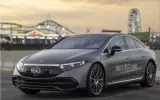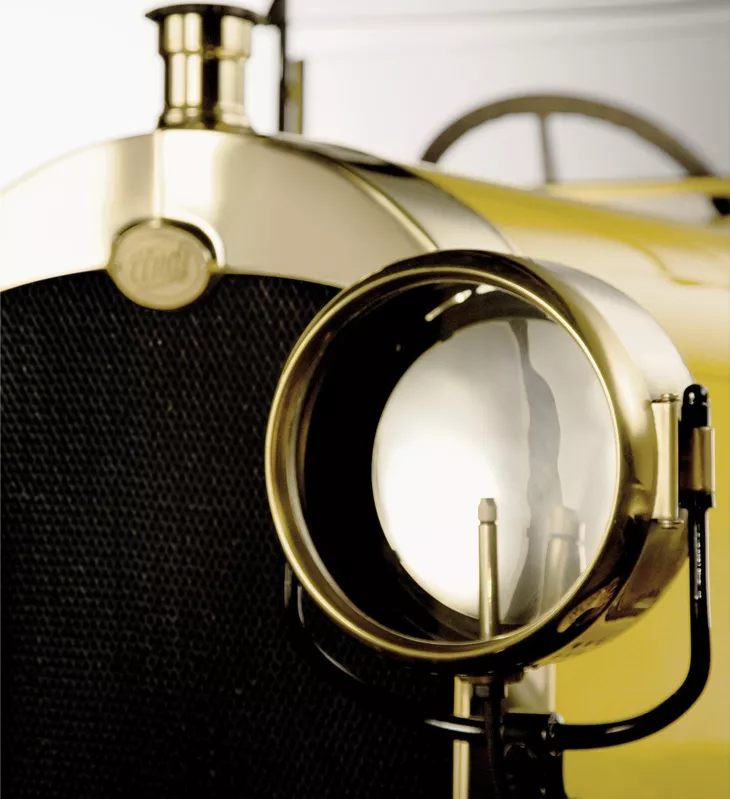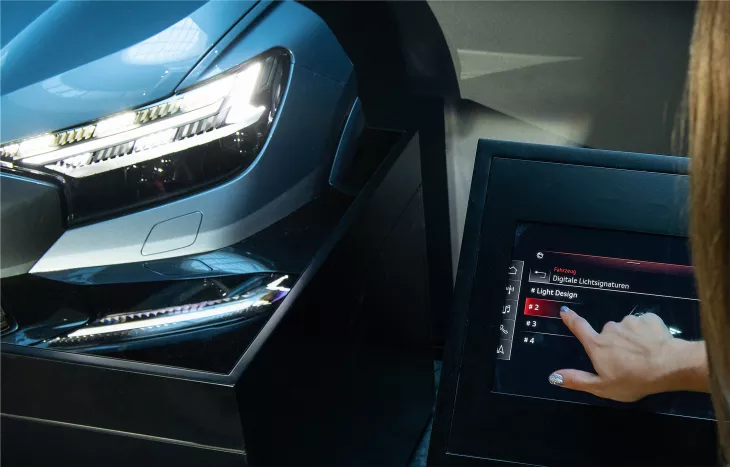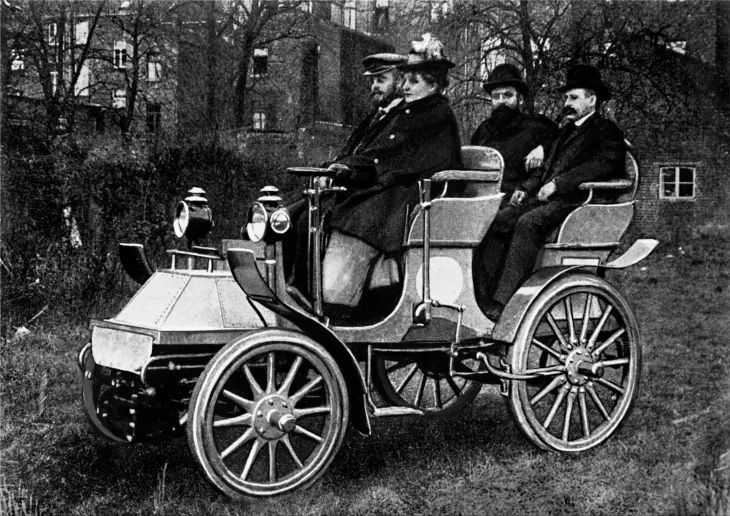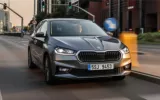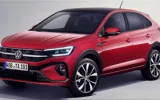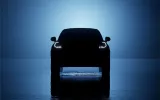Audi's mobile museum in Ingolstadt has opened a new special exhibition titled "The Speed of Light," which provides an unprecedented look at the evolution of automotive lighting throughout the company's history. The original automobiles used live fire as illumination, and the unique display looks back to those days and forward to the next generation of automotive lighting. In addition to showcasing the evolution of lighting technology over time, the exhibition features a fleet of 10 automobiles from each era. Between November 18th, 2022, and June 4th, 2023, "The Speed of Light" will be on display at the Audi museum on wheels.
For a long time, "the early days of cars remained in the shadows," explains Stefan Felber, curator of the new special exhibition from Audi Tradition. Felber says, "The headlights and taillights of today's cars, which are so ubiquitous as to be nearly invisible, had a rocky beginning." Because automobiles evolved from horse-drawn carriages, their first iterations kept the horse-drawn vehicles' candle-lit interiors, which were stored in wind-resistant cabinets. Safe road illumination became increasingly vital and legally mandated as automobile speeds increased and nighttime driving became more widespread.
Early automobile lighting was provided by candles and then kerosene lamps. In the years before electric lighting became widespread, carbide headlights helped get people around. Regarding modern headlights, 1913's so-called "Bosch light" is often cited as the first significant step forward. The invention of the double-filament bilux bulb in 1924 made it possible for a single headlight to function as both a low- and high-beam.
Consistent improvement efforts have also relied on adequate lighting from a vehicle's headlights. Accelerated development of lighting technology at Audi began in earnest with the advent of halogen technology in the early 1970s, ushering in a new era with the debut of xenon headlights on the Audi A8 for the first time in 1994.
Audi was the first automaker to utilize LED technology at the turn of the millennium fully. In 2004, the company began mass-producing LED daytime running lights for the A8 and W12. Two years later, the company revolutionized the lighting industry by introducing the first full-LED headlights in the Audi R8 super sports car. Audi's digital matrix LED headlights and digital OLED taillights are two examples of cutting-edge lighting technology that point the way into the future.
"The relevance of lighting technology is constantly expanding, and the perspective is changing," says Stephan Berlitz, head of lighting development within Audi's technical development. Although security will always be a priority, tomorrow's lighting needs more than bright. With digitization, Audi is ushering in a new era of automotive lighting. Light becomes a channel for external communication and interaction, crucial for conveying information to other drivers. For instance, the front and rear lights are already excellent design features to further personalize a vehicle with digital light signatures. Therefore, the lighting for the car is still in the early stages of development.
In "The Speed of Light," the oldest vehicle on display is an Audi type C from 1919 equipped with acetylene lamps. The 1925 Horch, 10/50 horsepower, has electric lighting. There is also a DKW F 91 from 1954 with yellow front fog lights and a bilux main beam from a 1936 Horch 850 Cabriolet. Halogen technology is already present in the 1976 Audi 80 GTE's twin headlights, while xenon lights are found in the 1994 Audi S6. With the introduction of the first-generation Audi A8 in 1994, xenon headlights were finally put into production.
The Audi R8 LMX from 2014, equipped with a high laser beam, and the Audi A8 from 2017 with HD Matrix LED headlights, including laser light as a supplementary high beam, will also be on display at the particular show. The Audi AI concept car: CON rounds up the new special exhibition at the Audi museum mobile. The entire surface, front and back, is converted into a digital display of thousands of individual triangular pixels. What started as a one-dimensional signal and warning function will need to evolve into flexible two-way communication with the environment and a boon for driver safety in the future.


